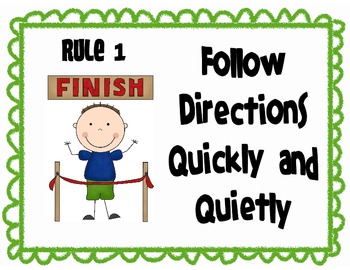 |
| virgil-n.blogspot.com |
One of my favorite basketball players growing up was Larry Bird, I heard it said that like may other great athletes the game unfolded for him in slow motion as he played. He knew, studied, and analyzed his teammates and opponents becoming a master of his court environment. He gained insights into their habits and tendencies which allows him to see several steps, moves, moments in the future. He was not blessed with the greatest physical skills but because of his reflective and studious approach to the game he was able to maximize his abilities and potential by not being rushed into mistakes and miscues. With such insight and foresight he was often able to be where he need to be, when he need to be there, prepared to make the great plays that others could only dream of.
The same type of dynamics exist within the classroom environment as well. The issue is this, the classroom is a living organism with movement, interactions, social exchanges, and numerous activities creating a collage of life. This life ebbs and flows in predictable patterns of cause and effect impacting learning and achievement. Such factors can either exist uncheck, unrestrained, and unregulated creating a cacophony of accidental and incidental confusion. Or, the life force of the classroom can be purposefully, proactively, engaged, arranged, and orchestrated to created a masterpiece in which learners thrive and flourish.
Time, experience, and action research within my own classroom environment has led me to arrange my environment in very specific ways speaking to a variety of issues which continually arose overtime. Below I offer three areas/arrangements within my learning environment and offer the reasoning behind their current configurations.
The first area of consideration relates to the supplies which are used daily within my 4th grade classroom. Everything from art/drawing supplies, to writing and math implements are located in one place. Originally these items were located in a variety of points around my classroom. As I observed my students move within the classroom gaining access to need supplies I observed a number of problems. As students gathered supplies they often disrupted learning by visiting with others in the area of the supplies, disrupted sight lines during lessons, or impacted concentration with their noise and movement.
My solution was to locate my most used supplies in one area, off to the side of my room, in front of my desk. This allowed students to gather supplies with a minimum of disruption to sight lines. Now centrally located, supply gathering activity is restricted to one area rather than throughout the room (I also tried to build an open space around the supply area to speak to the issue of proximity to other students.) In addition when I do ask students to acc

ess supplies I control the numbers arriving in this area at any one time by asking for one student per table group, or allowing only one table group at a time to come up for their supplies. A final, unanticipated benefit is by having the supplies near my desk I can better monitor usage and tidiness of the supplies. My students tends to waste fewer less, and don't leave them in the disarray they previously did as they are in close proximity to my desk and front table and under my watchful eye.


Another problem common to my early classroom related to traffic patterns. I tried a variety of student desk configurations with varying degrees of success. There were problems related to travel around the classroom making it difficult for me and my students to move around the maze that was the student seating arrangement(s). In consideration of this issue (as well as my practice of often having students work together in group activities). I arranged the desks in groups of 4 and 6. Smaller groupings didn't open up enough travel lanes, and larger grouping proved unwieldy for group activities. Now movement in and around the classroom allows me to quickly and easily monitor and assist students working at their desks. In addition my classroom is a safer place, with fewer accidents as I insist that students push in their chairs, not sit on the edge of their chairs while working (thus pinching off travel lanes), as well as hanging up coats and placing books and supplies in or under desks. A final example of traffic pattern

consideration can be seen in where I house my Chromebook cart. By placing is along a side wall and training my students to approach the cart along the wall to obtain their Chromebooks and then continue walking towards the back of the room, I don't have students walking into each other and pushing through clogs of other students, stopping to talk, etc. All of this translates to more time on task as students move quickly and safely in their environment. I also have to engage in far fewer behavior redirects which takes my time and energy and can negatively impact teacher/student relationships.

Finally, I my front table is an important tool in keeping myself organized throughout my day. Each day as I prepare my lessons I stage them from left to right (facing the class) from beginning to end of day. As I progress through my day each stack of supplies, books, etc. speaks to a different lesson during my day. I spend far less time searching for materials wasting precious instructional time and maintaining student engagement. In addition I often use this area for students to check there progress and accuracy as they work independently in groups or alone around the room. I can monitor student self checks and identify how quickly and completely they are working through lessons via this classroom gathering point. This table also often becomes the forum for small group mini lessons for struggling students who come to my attention as they check their own work.
There are a number of other practices and considerations that I apply in my learning environment which removes or minimizes the hurdles for students which often spell the difference between success and failure. It's really not rocket science, rather it's just taking the time to look, listen, and study my students, their environment, and my practices. To be like those great athletes who are students of their game. I try to anticipate and avoid problems while trying to maximize engagement and achievement by as much as possible being one step ahead or the game. It does take work to do so, but in the long run the benefits and results far outweigh the cost and effort required. Classrooms are dynamic living organisms which when crafted carefully are a thing of beauty to watch operate.






















